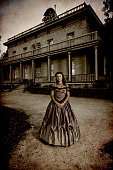in 1896, George Melies, the so-called French master of illusion, created a film titled The Devil’s castle, also known as the haunted castle in the United States. The short three-minute film opens up with a bat, circling around a creepy room in a castle. It’s in this silent film that were greeted with the skeleton and then the devil himself.
These simple haunting figures would later appear in an outstanding amount of times in the future films of the genre, which was the genre of Horror. The movie, The Devil’s Castle, is widely considered as the first horror movie. The genre that shifts into a new era with each a decade, horror has formed into many subgenres within itself. There are many variations of horror genre descriptions here on this site for viewers of interest. In the late 19th and early 20th centuries, horror films were inspired by gothic horror, a genre told in many novels throughout the second millennium by famous authors such as Robert Stevenson, Mary Shelley, and the American legend himself Edgar Allan Poe. These gothic stories explored haunted castles with classic creepy fall scenery that translated into the early horror classics. Crossing over into the early 1910s silent era, the original Frankenstein, Dr. Jekyll and Mr. Hyde and Werewolf films were released.
Horror films were very well defined all across Europe, as seen in Dante’s Inferno from Italy exploring hell, purgatory and Heaven itself. The 1920s turned to be germany’s era of Expressionism that was a type of cinema of intense symbolism and stylized sets. In the movie, The Cabinet of Dr. Caligari, shadows were painted on sets and had on Orthodox perspective shots This type of filmmaking led to an inspired piece known as Nosferatu, said by journalists at the time to be a genuinely frightening film to cause nightmares.
Following World War One, Germany was isolated as a country from the rest of the globe. They were in debt to countries in the fragile Weimar Republic was about to fall apart.
In 1925, the future vice-president Charles Dawes offered a plan to Germany to try and stabilize the country’s economy via loans and other agreements. However, the amount of German film exports decreased ,leading to a crippling economy for films. In Germany, companies known as MGM and Paramount came in to rescue the failing companies by lending them money in return for collaboration rights of German directors and writers. Germans migrated to Hollywood in the mid 1920s for work in studios, and even well into the early 1930s. Also, in the decade of the 1920’s, another soon-to-be giant would step in to produce films of horror. The films would be based off of human deformities. This would lead to the Hunchback of Notre Dame and the Phantom of the Opera, two silent films that had a key star known as Lon Chaney, the “man of a thousand faces.”
After Chaney’s death in 1930, a universal monster series was about to start. The next decade lead to another seismic shift within the horror genre.

